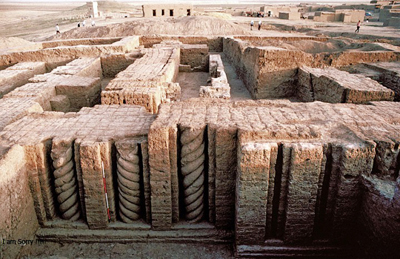 Tell Leilan is an archaeological site situated near the Wadi Jarrah in the Khabur River basin in Al-Hasakah Governorate in Syria , northeastern Syria. The site has been occupied since the 5th millennium BC. During the late third millennium, the site was known as Shekhna. Around 1800 BC, the site was renamed Shubat-Enlil by the Assyrian king, Shamshi-Adad I and it became the capital of his state of northern Mesopotamia. Shubat-Enlil. was abandoned around 1700 BC
Tell Leilan is an archaeological site situated near the Wadi Jarrah in the Khabur River basin in Al-Hasakah Governorate in Syria , northeastern Syria. The site has been occupied since the 5th millennium BC. During the late third millennium, the site was known as Shekhna. Around 1800 BC, the site was renamed Shubat-Enlil by the Assyrian king, Shamshi-Adad I and it became the capital of his state of northern Mesopotamia. Shubat-Enlil. was abandoned around 1700 BC
The city originated around 5000 BC as a small farming village and grew to be a large city. 2600 BC, three hundred years before the Akkadian Empire. A 3-foot layer of sediment at Tell Leilan containing no evidence of human habitation offered clues as to the cause of the demise of the Akkadian imperialized city; analysis indicated that at around 2200 BC, a three-century drought was severe enough to affect agriculture and settlement.
The conquest of the region by Shamshi-Adad I (1813–1781 BC) revived the abandoned site of Tell Leilan. Shamshi-Adad saw the great potential in the rich agricultural production of the region and made it the capital city of his empire. He renamed it from Shehna to Shubat-Enlil, or Subat-Enlil, meaning “the residence of the god Enlil” in the Akkadian language. In the city a royal palace was built and a temple acropolis to which a straight paved street led from the city gate. There was also a planned residential area and the entire city was enclosed by a wall. The city size was about 90 hectares (220 acres). Shubat-Enlil may have had a population of 20,000 people at its peak. The city prospered until the king Samsu-iluna of Babylon sacked. it in 1726 BC. Shubat-Enlil was never reoccupied
The mound of Tell Leilan is being excavated by a team of archaeologists. The excavation started in 1979. The study of the site and the region is continuing. Among many important discoveries at Tell Leilan is an archive of 1100 cuneiform clay tablets maintained by the rulers of the city. These tablets date to the eighteenth century BC and record the dealings with other Mesopotamian states and how the city administration worked. Finds from the excavations at Tell Leilan are on display in the Deir ez-Zor Museum.
Compiled by:Nada Haj Khider

